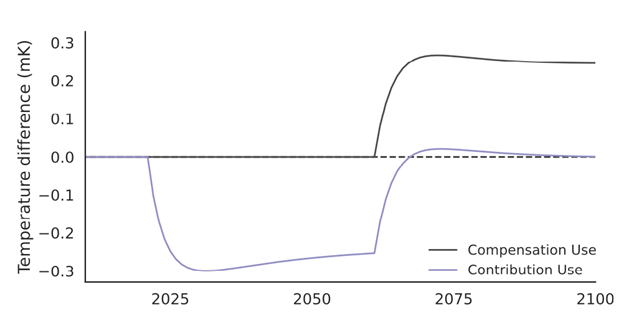
Why Temporary Carbon Storage in Forests Has Little Climate Value: Part 1
The climate value of forest carbon depends on how long it stays out of the atmosphere. CO2 consequences stretch into geologic time, but forests and the contracts binding them are temporary.
This is part one of a two-part blog series. To continue to part two, please visit this page.
You would be forgiven for thinking that carbon stored in healthy forests is just as valuable as the emissions from burning fossil fuels are harmful. After all, forests provide a dizzying array of benefits: habitat for wildlife, timber for construction, and a range of ecosystem services that support clean air and water for nearby communities. Many rightly value them simply for existing. But perhaps the most frequently cited reason to protect forests is their ability to store carbon that would otherwise end up in the atmosphere and contribute to global warming.
There’s just one problem: carbon pollution is forever. Forest carbon storage is not.
Fossil CO2 emissions have consequences that stretch into geologic time. Climate scientists characterize CO2’s atmospheric lifetime using impulse response function, an equation that describes the fraction of the original emission that remains in the atmosphere, absorbs incoming radiation, and contributes to planetary warming. When CO2 is emitted, the majority is re-absorbed by forests and oceans in the decades after its release, but even after 1,000 years about 25% of the original mass remains aloft—and about 20% remains after 10,000 years.
As someone who studies climate policy, I’m surprised at how many other experts gloss over this fundamental feature of the carbon cycle. It’s not some technical afterthought. Because the effects of CO2 are so long-lived, contemporary climate science is focused on cumulative carbon budgets as the primary driver of warming outcomes, a core concept that underlies the 2015 Paris Agreement. The big question is how much CO2 is emitted in total because deferring emissions by a few years or decades doesn’t change long-term outcomes.
Unlike the harms of CO2 pollution, efforts to credit carbon stored in forests are decidedly more transient. Although carbon markets often pay lip service to carbon credits’ “permanence,” in practice, forest carbon commitments range from only 1 to about 100 years. The most well-known carbon offsets come from efforts that claim to prevent tropical deforestation, where projects typically claim to protect and monitor forests for about 40 years.
When someone justifies emitting 100 tons of CO2 with 100 tons of carbon stored in a forest, they are effectively mortgaging the atmosphere. So long as forest carbon stays put, the trade has no net effect on temperature. But when forest carbon is released—which could happen when trees die in a changing climate, or when short-term carbon offset contracts expire and allow landowners to clear their forests—temperatures inevitably go up.

The only way to avoid this fundamental shortcoming is to support temporary carbon mitigation without justifying any ongoing pollution, an approach known as the contribution model. In essence, the contribution model begins with an understanding that the many benefits of forests are not equivalent to the permanent harms of CO2 pollution. A company or government that follows this model could still fund forest carbon projects and promote their expected benefits, but it could not make any climate claims on that basis—such as reporting lower net emissions or claiming carbon neutrality.
But even under a more honest contribution approach, the climate value of forest carbon depends on how long it stays out of the atmosphere. So how long is long enough? I’ll turn to that question in my next post.
Danny Cullenward
Senior FellowDanny Cullenward is a senior fellow at the Kleinman Center. He is a climate economist and lawyer, a Research Fellow with the Institute for Carbon Removal Law and Policy, and the Vice Chair of California’s Independent Emissions Market Advisory Committee.

